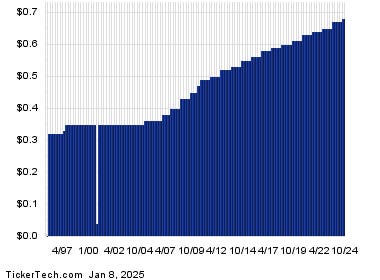Index funds are mutual funds or exchange-traded funds (ETFs) that have one simple goal: To mirror the market or a portion of it. For example, an S&P 500 index fund tracks the collective performance of the hundreds of companies in the S&P 500. If the S&P 500 is up 5 percent in a year, the fund should be close to that, too.
Index funds are typically passively managed, meaning there is no active manager to pay. Rather than trying to bet on individual stocks to beat the market, an index fund simply aims to “be the market” with an autopilot approach that holds the same securities in the same proportion as the index. Here’s the kicker: Most active fund managers actually fail to beat the market and instead underperform their target index. Why pay more for less when you can take advantage of the track record of a broad-based market index?
Popular types of index funds
U.S. stock indexes
The S&P 500 index is one of the most used benchmarks for stocks focused on large U.S.-based companies. While the companies in the S&P account for approximately 80 percent of the total value of the U.S. stock market, some investors opt for extended market index funds that help track that remaining 20 percent. The Russell 1000 index tracks the 1,000 biggest U.S. stocks, and the FT Wilshire 5000 index effectively represents every publicly traded stock in the country.
The Nasdaq 100 is another popular index because it includes major tech companies such as Apple and Amazon, and has delivered high returns for years.
International stock indexes
Investors can seek to capitalize on growth opportunities throughout the rest of the world, too, via a plethora of index funds that track equities in developed and emerging markets across the globe. There are also total international index funds that cover everything outside the U.S.
Bond indexes
In addition to investing in broad-based stock index funds, you can choose from a range of bond index funds: for example, short-term bonds with maturity dates in the near future, long-term bonds with maturities longer than 10 years, emerging market government bonds and more.
Dividend indexes
Some fund managers create and track their own proprietary indexes, including dividend stock indexes. Dividend indexes include only stocks that pay a dividend, and the ETFs are a popular way for investors to get access to a diversified portfolio of dividend-paying companies.
How to invest in index funds: Two key factors
Index funds are available to anyone who wants to invest money. ETFs typically require a purchase of at least one share, though brokers offering fractional shares can help you get around that. But index mutual funds may ask for an initial deposit of $1,000 or more. Many of these index funds track the same index, so it’s important to pay attention to two key factors when comparing them.
- The expense ratio: Because index funds have no active manager involved, they tend to have rock-bottom expenses. Still, there is a cost associated. Be sure to compare the expense ratio to understand how much of your investment will go toward the administrative and operating costs of the fund.
- The tracking error: Look at the past performance of the fund, too. How well did it match the index? If it has a high tracking error — an indication of how far off it fell from mirroring the index — you’ll want to look for other funds that have historically managed to keep a better pace with the index.
Pros and cons of index funds
No matter where you invest your money, you should think about the potential upsides and downsides. Weigh these key factors when thinking about index funds.
Pros
- Low costs: Index funds are a great, low-cost way to invest. From 1996 to 2023, average equity mutual fund expense ratios fell by 60 percent, and average bond mutual fund expense ratios declined by 56 percent, according to the Investment Company Institute. In 2023, the average expense ratio for equity mutual funds was 0.42 percent and 0.15 percent for equity ETFs.
- Instant diversification: Instead of trying to pick individual stocks or bonds, an index fund offers a chance to spread your bet across a wide pool of investment opportunities. In the words of Jack Bogle, the late founder of Vanguard, index fund investing means buying the whole haystack rather than looking for the needle in the haystack.
- More tax efficiencies: Because index funds aren’t constantly buying and selling securities, a regular routine in actively managed funds, they don’t generate surprise taxable capital gains distributions.
- Better informed: The securities that make up an index are public knowledge. For example, if a new company joins the S&P 500, you’ll be aware. That’s a key distinction from actively managed funds where the fund manager might bet on a company with an unproven track record, and you have no idea.
Cons
- Market cap weighting can weigh down a fund: An index fund can get bloated with overweighted stocks, which means it isn’t quite as diversified as you might expect. For example, consider the S&P 500 index, where more than 30 percent of its holdings are in the seven biggest companies. So, the performance of these funds is significantly tilted toward those major market players.
- Inability to sell: This isn’t technically a drawback, but it is an important lesson of index fund investing. These funds are not designed for frequent trading. Some mutual fund companies may charge fees for any index fund shares sold within a certain time frame — for example, 90 days of purchase. That shouldn’t scare you off, though: They do this to minimize trading and administrative expenses to hold costs down for all investors in the fund. Remember, holding on through the ups and downs over time is a key piece of long-term investing success.
— Bankrate’s Logan Jacoby contributed to an update of this article.
Editorial Disclaimer: All investors are advised to conduct their own independent research into investment strategies before making an investment decision. In addition, investors are advised that past investment product performance is no guarantee of future price appreciation.
Read the full article here
















